Whither the Dead Sea Scrolls?
PeriBlog XVI: Qumran
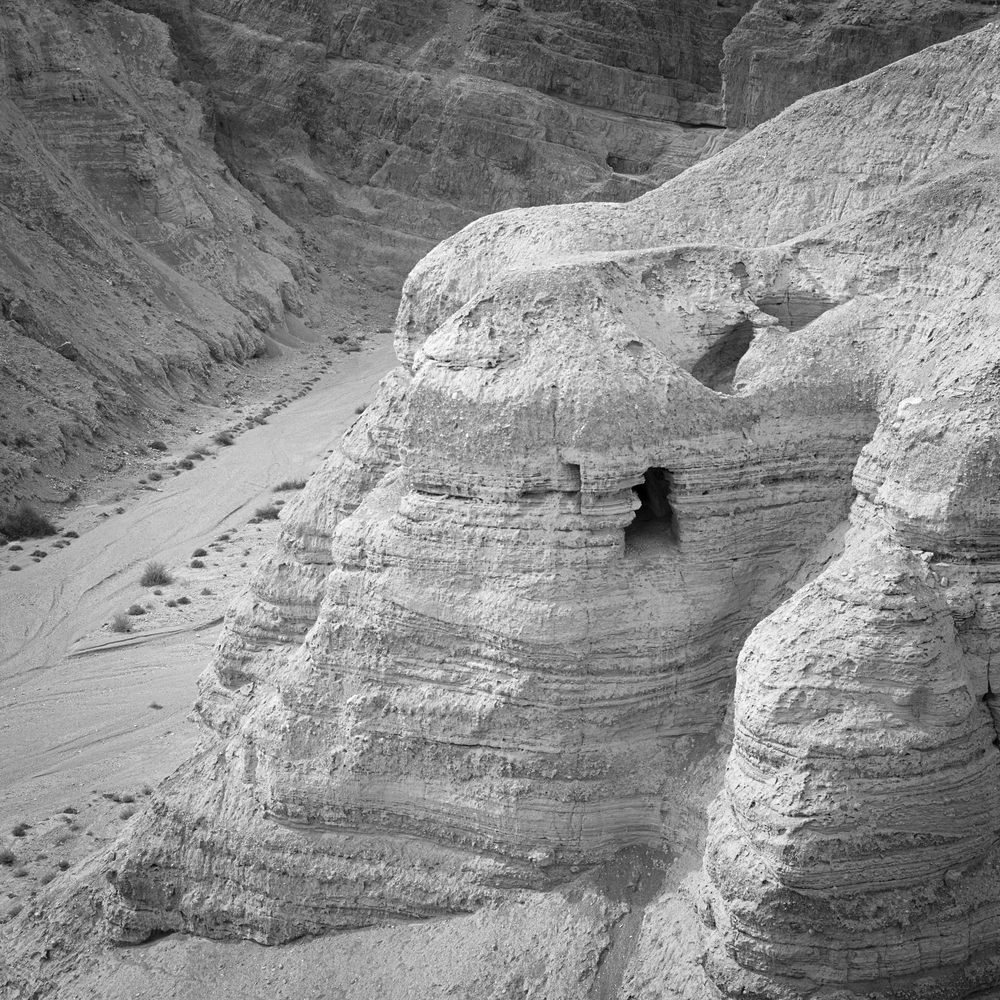
Cave Four, Qumran
It is a place that is famous for what is no longer there.
Shortly after the end of World War II, a young Bedouin boy named Muhammid Ahmed el-Hamed was exploring caves in the limestone cliffs that stand west of the Dead Sea. In one of these caverns, high off the ground, he made a most extraordinary discovery: ancient clay urns that contained papyrus writings that were more than 2,000 years old.
Muhammid had discovered the Dead Sea Scrolls, one of the most important treasures of the ancient world. These Hebrew writings are the oldest copies of the Hebrew Bible we possess, the earliest witnesses to the biblical text.
Today one can visit the sere limestone cliffs where these important works were found. Who knows—maybe more scrolls are hidden in a nearby cave.
The Essenes
Qumran stands thirteen kilometers south of the ancient city of Jericho, perched between the Dead Sea and a line of mountains that seals the western edge of the Jordan Rift Valley. A mixture of salt and sandstone, it is difficult to imagine a less promising landscape. Stunted date palms, planted on a grid, are the predominant vegetation; they cling to life only by virtue of generous irrigation. Summer temperatures can climb above 115 F, and the Dead Sea is home to a nasty, relentless fly that specializes in hounding human visitors.
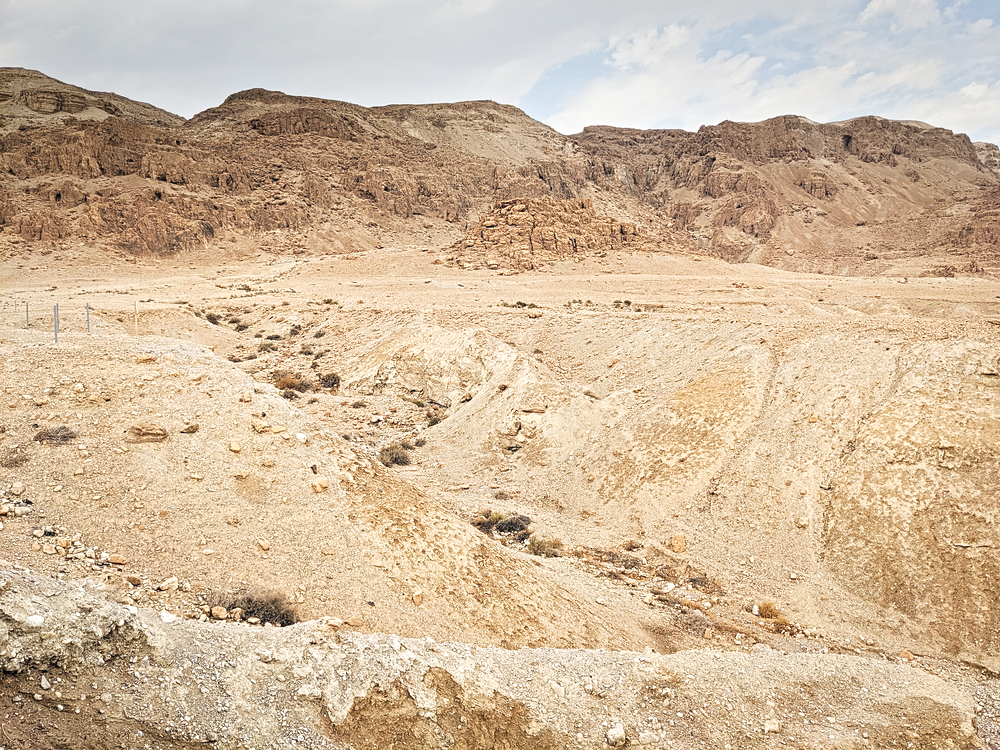
An inhospitable landscape
If you wanted to get away from your fellow humans, this would be the place. Air-conditioned tour buses have increased the transitory population, but Qumran is still a lonely spot.
Which was perfect for the Essenes.
The first century Jewish historian, Josephus, described this group in his Jewish Wars. Two hundred years before the birth of Christ, the Essenes separated themselves from the rest of Israel in order to pursue a more godly life. These forerunners of Christian monasticism withdrew to the inhospitable land south of Jericho and formed an ascetic community. Here they pooled their labor and resources, creating an early community of goods in which no man possessed any more than his brother.
“These men despise riches,” wrote Josephus. “No one can be found among them who has any more than anyone else. For it is their law that those who join them must donate what they have to the whole order. Therefore, there is no appearance of poverty among them, nor any cases of excess wealth: everyone’s possessions are mingled with the possessions of the community.”
Here, according to Jospehus (Bell. Jud. 2.8.5), they devoted their lives to prayer, continence, and work to support the community. The community possessed an active scriptorium and the brothers devoted their time to producing copies of biblical texts.
Significance

The Great Isaiah Scroll (Wikipedia)
It was the literary activity of the Essenes that excites so many modern biblical scholars. The community’s scribes copied books of the Hebrew Bible, and some of these copies were stored for safety in the mountain caves around Qumran.
These early manuscripts are an important witness to the text of the Hebrew Bible, and they help modern scholars understand the transmission of these writings over time. In addition to recopying biblical literature, the Essenes also produced their own spiritual works, which shed light on their group and the Jewish context of their age.
The Roman Disaster
The Essenes’ golden age of peaceful scholarship came to an abrupt end. In AD 66, Israel rebelled against the Roman occupation. For four years, future Roman emperors Vespasian and Titus led the legions against the rebels. Although most of the country was defeated by AD 70, a few strongholds in the east (like Masada) held out against the Romans.
Qumran was sacked in AD 73. The Essenes were either killed or dispersed. The threat of Roman conquest, argue some scholars, led the Essenes to hide their precious manuscripts in the caves that burrow into the hills surrounding the community. The Roman victory ended the Essene community and their manuscripts lay hidden until 1946. The site may have been converted into a Roman garrison, which housed soldiers into the second century.
Qumran Today
Qumran is surprisingly popular today, part of the biblical tourist route. Upon arrival I discovered a parking lot filled with white tour buses. The lonely spot is no longer neglected.

Qumran is no longer a lonely place
A small museum offers a brief—but odd—video reenactment of what Essene life might have been like. The video spent a surprising amount of time on the possibility that John the Baptist might have studied with the Essenes—a thin conjecture at best.
After watching the video, I walked through a couple of small rooms that contained surprisingly little. I had expected to see a rich exhibition of archaeological material, or possibly a scroll fragment or two. Alas, the relics were thin on the ground, and much of the material that was on display seemed to be replicas.
Outside, the site of the ancient community stands in an open excavation. Yellow limestone foundations hint at the size and arrangement of the buildings that once stood here.
An aqueduct from the nearby mountains made life possible in this arid place. The water, upon reaching the community, was routed through stone channels.
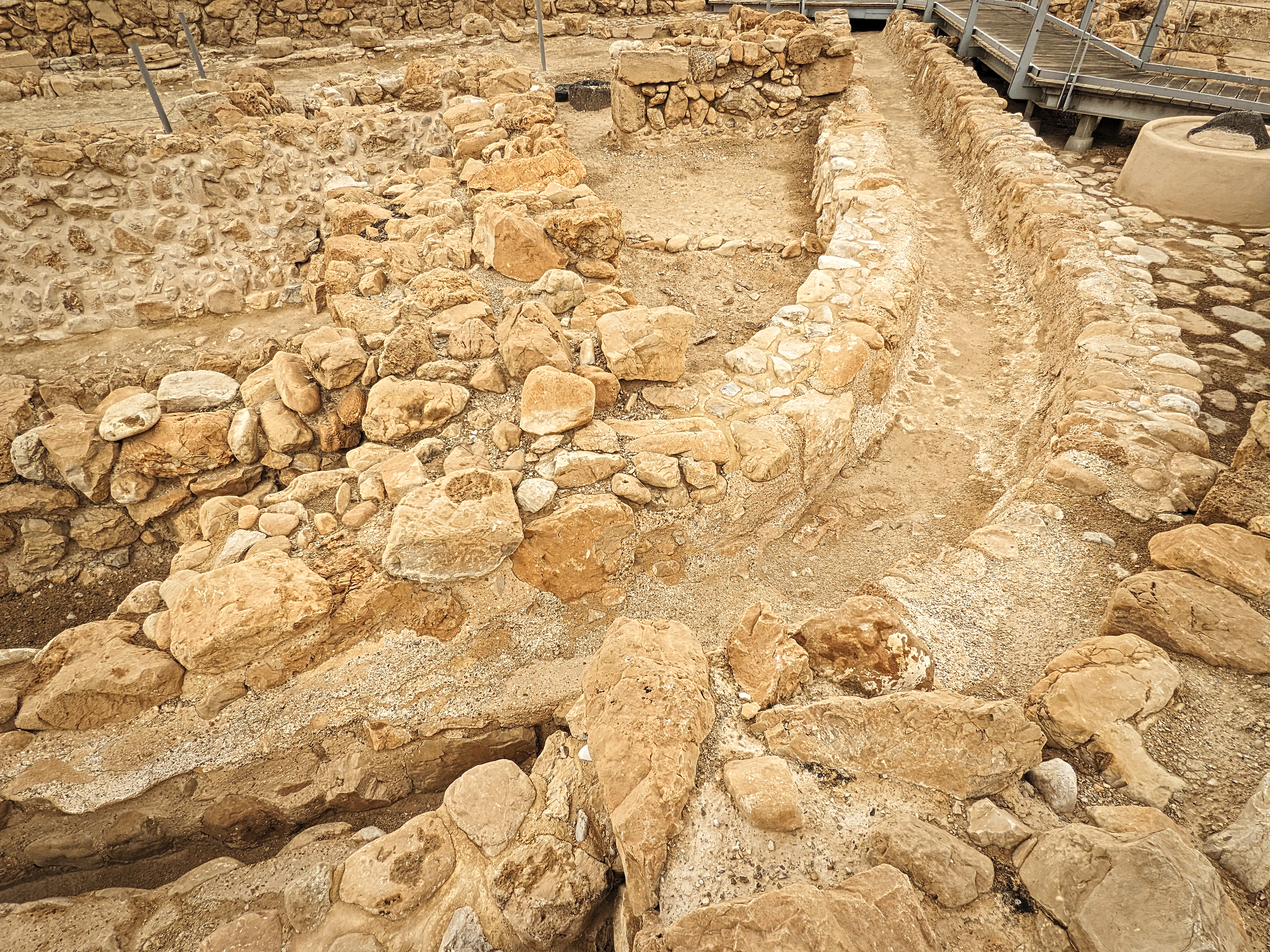
Stone channels once carried water for the community
A cistern sequestered water for the dry times. The community also possessed several ritual baths, where the Essenes washed themselves before their religious activities.
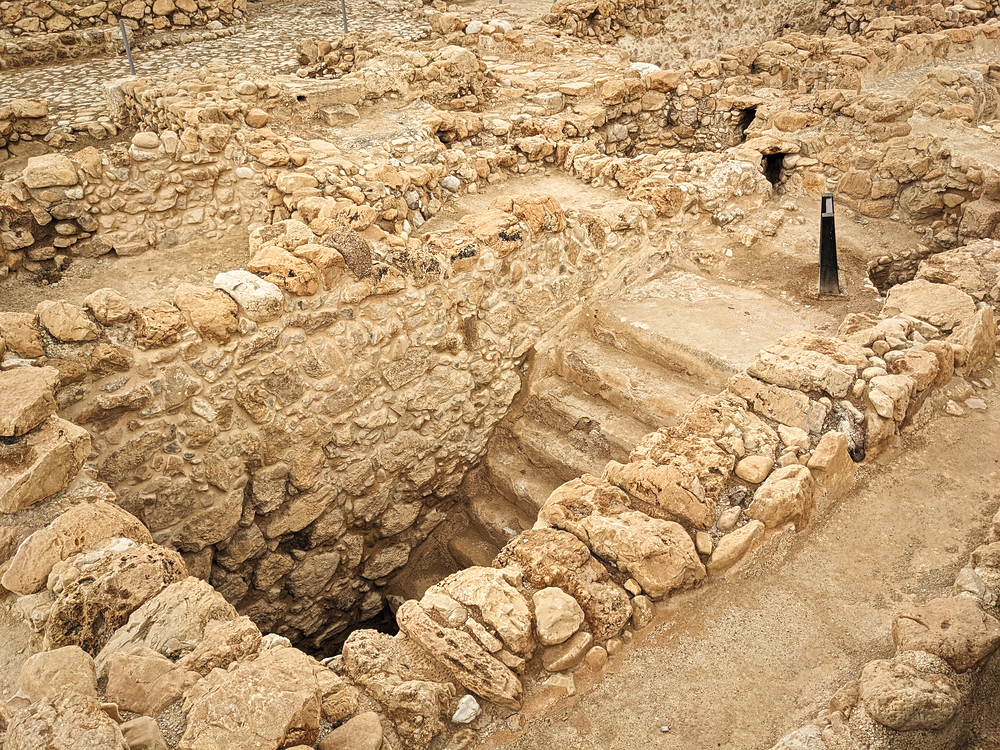
Steps descend to a bath, used for ritual purification
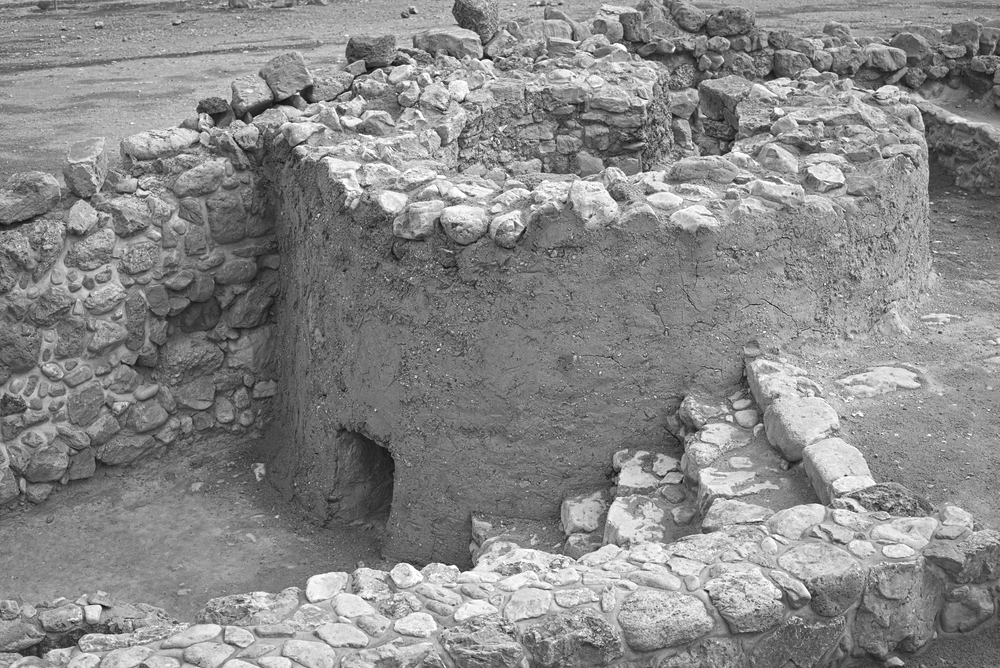
Foundation of Qumran pottery workshop
At the southern end of the site, you can look across a steep valley to Cave Four, the hole that yielded the first scrolls.
After finishing my exploration of the site, I returned to the building to see what I had missed. To my surprise (and dismay) I discovered a thriving gift shop, spread across several rooms, occupying a space that was larger than the area reserved for the exhibits.
Tourists crowded around the tables of a space that looked like a modern American department store. Clearly the creators of the museum understood what their visitors value.

The gift shop occupies more space than the museum’s exhibits
In closing, I would be remiss if I failed to mention that several modern scholars have expressed doubt about the link between the Essenes and Qumran. These critics of the traditional view postulate that the site was a Jewish fortress, the villa of a wealthy landowner, or the base for a mysterious group of (non-Essene) religious scribes.
As with most disciplines that touch upon religious heritage, the debate continues to rage.
Qumran is an important link in the history of biblical transmission, but I don’t feel that its museum has done much to emphasize that significance. This would be an amazing place to offer an explanation of how ancient texts were copied, transmitted, and recovered centuries later. The museum should close its gift shop and develop a richer series of exhibits.
And it wouldn’t hurt to have at least a couple of fragments of the Dead Sea Scrolls in a display case.
If you are enjoying this series, why not subscribe to Richard's monthly newsletter, What's New in Old News? The Peripatetic Historian is on the road, roaming the world and compiling fresh adventures. Don't miss out. Click here to join the legions of above-average readers who have already subscribed.